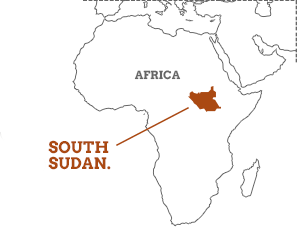South Sudan travel guide
Vacations to South Sudan are a rollercoaster ride. You’ll encounter difficult scenes: roadside tanks and camps for the two million people displaced by the civil war. But you’ll also find curiosity and a cautious warmth from people who honestly wonder why you’d be so awestruck by the festive inter-village wrestling competitions and immense, bird-packed wetlands.


You don’t go for the monuments you can count on one hand. You go to meet the people – tribal leaders, displaced families, city workers – who make South Sudan the complicated country it is.![]()

Cheer from the sidelines as you watch Mundari men wrestle with their neighbours. Learn the truth behind the scarification rituals of the Toposas people. Join a Lotuko dance in the pretty villages outside Torit. And hear for yourself how wars have been fought over the Dinka cattle camps. The best South Sudan vacations surround you with the stories and traditions of the people without ever treating the communities like spectacles. So leave your assumptions at the door and find out more in our South Sudan travel guide.
South Sudan is…
one of the best countries for meeting tribal communities – responsibly. Go without preconceptions and leave rewarded.
South Sudan isn’t…
easy. UN Protection of Civilian camps (POCs) are just the visible aftershocks from the violent civil war that ground to an end in 2018.
South Sudan map & highlights
What with the village hopping and long drives along dust roads, you’ll need around nine days to really get stuck into South Sudan. Tours tend to start off in the capital, Juba, before heading out into the settlements beyond the city limits. Reliable infrastructure is a rarity, so expect a rocky ride along unsealed roads. Accommodation ranges between hotels, basic lodges and tents; you’ll even get the chance to set up camp outside a Mundari village in Mayong. It’s a rare opportunity to experience how local life unfolds in South Sudan.
Imatong Mountains
1. Imatong Mountains
The Imatong Mountains rise up against the Ugandan border. Mount Kinyeti (3,187m) is the country’s highest point, handing out endemic herbs at the summit and diverse rainforests on the foothills. Although threatened by deforestation and poaching, its woodland is still a safe space for endangered spotted ground thrushes and canopy-dwelling primates. For another point of view, meet the Imatong people who farm the eastern slopes.
Juba
2. Juba
Juba is under the frenetic spell that comes of being a 21st-century boomtown. Historically, this is where Victorian explorers set off to find the source of the Nile. And while there’s been investment in infrastructure since independence in 2011, you’ll also see camps protecting over 200,000 displaced people. Sip a sundowner at a waterside bar to realise the full spectrum of countries with interests in South Sudan.
Kapoeta
3. Kapoeta
All that glitters is gold in the Kapoeta region. Here, the Toposa people sift the Singaita River for flakes of the precious metal. Rickety Kapoeta town was once a halfway house for people displaced by the war, but now it’s in the hands of villagers who successfully campaigned for the cross-region peace agreement. The villages nearby have to be seen to believed; the stilted huts look more like beehives than houses.
Mayong
4. Mayong
Move aside, WWE – the Mundari people are famed throughout Mayong for their wrestling skills. Spend a little time in this region north of Juba, and you’ll probably come across an inter-village wrestling match played out in the red dust. Cheer along with the crowd and take the time to learn more about the arresting arrow-shaped facial scars that set the Mundari apart.
The Sudd
5. The Sudd
The 400km-long Sudd swamp hosts one of the biggest migrations in the world. Over two million animals travel between the Sudd and Boma National Park in spring and autumn – mostly antelope and elephants, with a hungry gaggle of lions and leopards in tow. The Sudd was inaccessible during the war, but there’s hope that the 2018 peace agreement will change that.
Torit
6. Torit
Torit is the capital of Eastern Equatoria State. This is the farming ground of the Otuho (Lotuko) people, who till the land for cereal crops like maize, millet and sorghum, plus sesame, peanuts, potato-like cassava and tobacco. Rainmakers and diviners are the VIPs of the picturesque hillside villages around Torit, where spaces for dancing and storytelling are as important as the ebony homes.
Our top trip
South Sudan cultural tour, 9 days
Discover the incredible cultural diversity of a hidden land
From
£3899
9 days
ex flights
Small group travel:
2024: 20 Jan
2025: 18 Jan
2024: 20 Jan
2025: 18 Jan
Travel Team
If you'd like to chat about South Sudan or need help finding a vacation to suit you we're very happy to help.
1-866-821-6866
Call toll free
Calling from outside the USA










